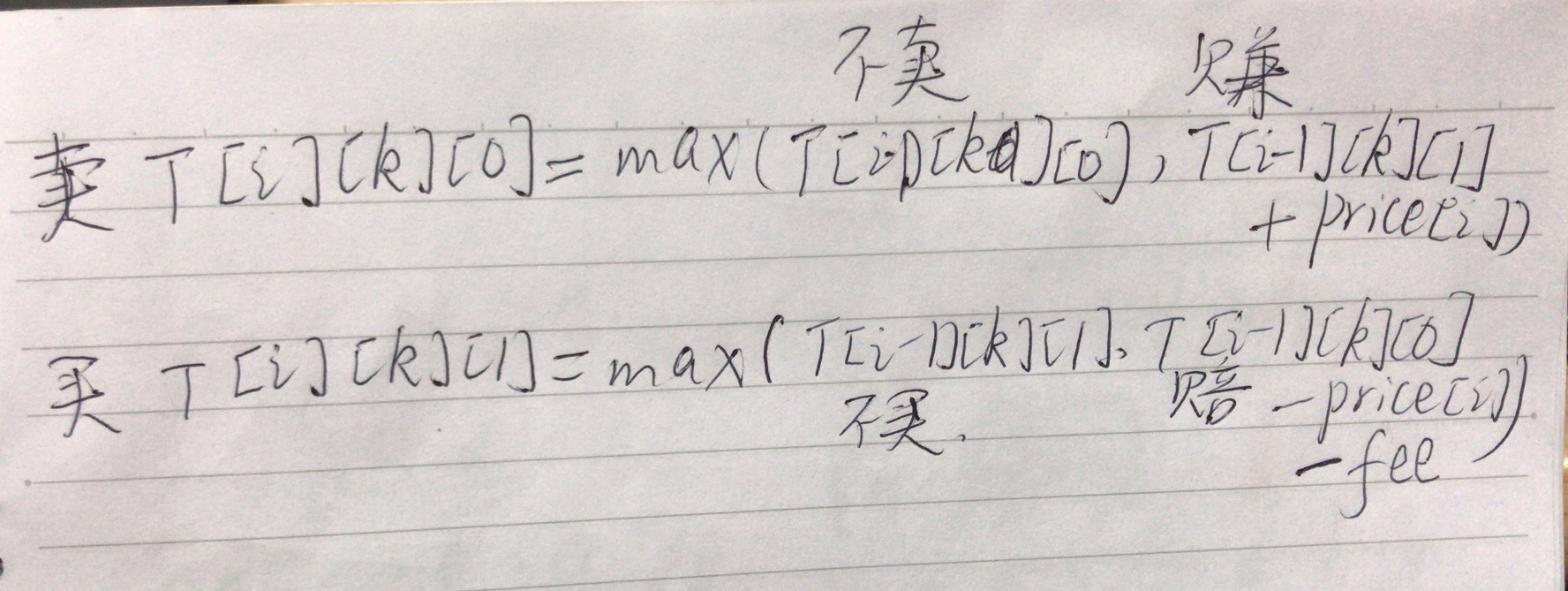[抄题]:
Your are given an array of integers prices, for which the i-th element is the price of a given stock on day i; and a non-negative integer fee representing a transaction fee.
You may complete as many transactions as you like, but you need to pay the transaction fee for each transaction. You may not buy more than 1 share of a stock at a time (ie. you must sell the stock share before you buy again.)
Return the maximum profit you can make.
Example 1:
Input: prices = [1, 3, 2, 8, 4, 9], fee = 2 Output: 8 Explanation: The maximum profit can be achieved by:
- Buying at prices[0] = 1
- Selling at prices[3] = 8
- Buying at prices[4] = 4
- Selling at prices[5] = 9
The total profit is ((8 - 1) - 2) + ((9 - 4) - 2) = 8.
[暴力解法]:
时间分析:
空间分析:
[优化后]:
时间分析:
空间分析:
[奇葩输出条件]:
[奇葩corner case]:
[思维问题]:
[一句话思路]:
[输入量]:空: 正常情况:特大:特小:程序里处理到的特殊情况:异常情况(不合法不合理的输入):
[画图]:

[一刷]:
[二刷]:
[三刷]:
[四刷]:
[五刷]:
[五分钟肉眼debug的结果]:
[总结]:
基本设定是:卖会赚钱,买会赔钱
[复杂度]:Time complexity: O(n) Space complexity: O(1)
[英文数据结构或算法,为什么不用别的数据结构或算法]:
https://leetcode.com/problems/best-time-to-buy-and-sell-stock-with-transaction-fee/discuss/108870/Most-consistent-ways-of-dealing-with-the-series-of-stock-problems
[算法思想:递归/分治/贪心]:
[关键模板化代码]:
[其他解法]:
[Follow Up]:
[LC给出的题目变变变]:
[代码风格] :

class Solution { public int maxProfit(int[] prices, int fee) { //ini: T_ik0, T_ik(1, T_ik0_old int T_ik0 = 0, T_ik1 = Integer.MIN_VALUE; //for loop for (int price : prices) { int T_ik0_old = T_ik0; T_ik0 = Math.max(T_ik0, T_ik1 + price); T_ik1 = Math.max(T_ik1, T_ik0_old - price - fee); } return T_ik0; } }
